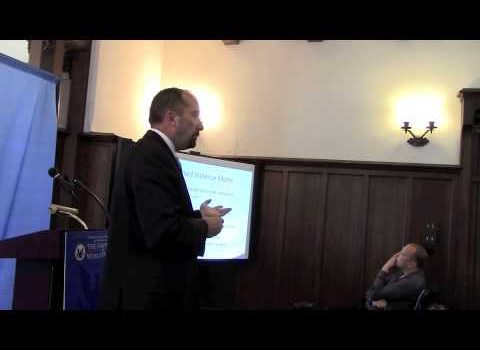Threat Assessments: Managing the Threat of Terrorism, Espionage, and Violence
https://www.ispeech.org
On September 18, 2014 Chuck Tobin, President of AT-RISK International, gave a presentation entitled “Threat Assessments: Managing the Threat of Terrorism, Espionage and Violence,” sponsored by the Career Services Office at The Institute of World Politics.
His remarks focused on threat assessment with regards to human behavior and potential for violence. Mr. Tobin used examples for cases of stalking and workplace violence to show how AT-RISK International studies an individual’s background and potential for future violence. By taking a proactive approach to identify and assess a subject, dangerous confrontations can be resolved.
AT-RISK International determines an individual’s potential for future violence and unwanted actions through an investigation which includes background information of an individual, surveillance previous to and post termination, and interviews of colleagues. During the background investigation, investigators look for “triggers.” An example given of a trigger was rejection. In many stalking cases, the individual being stalked had rejected the stalker. This rejection could lead to a violent incident and needs to be taken into account during the risk assessment.
Mr. Tobin indicated that many individuals present warning signs before an incident. The investigations identify and analyze these warning signs so that action can be taken before something happens. Mr. Tobin stressed the importance of having a multidisciplinary environment during a risk assessment. The assessment should include psychologists, behavioral analysts, security experts and many more to get an accurate assessment. Mr. Tobin stated that we “can not predict violence” but we must anticipate and be prepared for risks.
Kerri Hagstrom
source








0 Responses to Threat Assessments: Managing the Threat of Terrorism, Espionage, and Violence